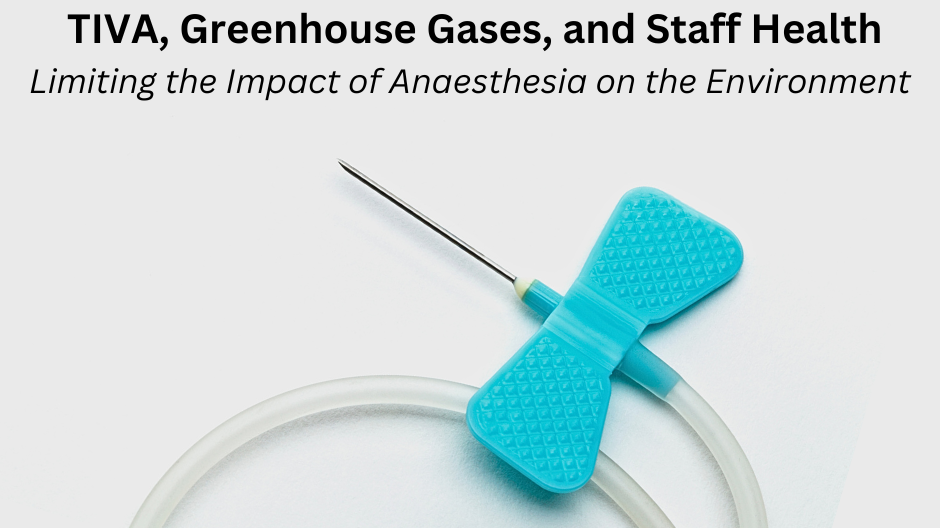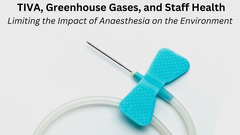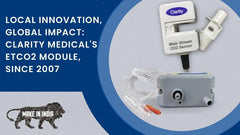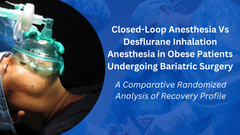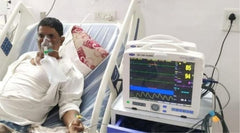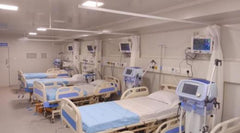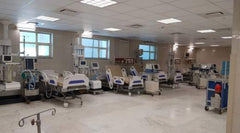TIVA, Greenhouse Gases, and Staff Health—Limiting the Impact of Anaesthesia on the Environment
Anaesthesia is essential for ensuring patient comfort and safety during medical procedures. However, its use has several environmental implications. The administration of inhalational anaesthetic agents contributes to the emission of greenhouse gases, which significantly impact climate change. Additionally, specific anaesthetic agents can have adverse effects on healthcare staff. In this article, we will explore the impact of anaesthesia on the environment, the health of staff members, and how Total Intravenous Anaesthesia (TIVA) offers an alternative approach that mitigates these concerns.
Greenhouse Gases and Anaesthesia
The use of inhalational anaesthetic agents, such as nitrous oxide (N2O) and desflurane, contributes to the emission of greenhouse gases. Nitrous oxide is particularly concerning as it has a significant warming potential and a long atmospheric lifetime. Desflurane, though it has a lower warming potential, is a potent greenhouse gas. The release of these gases during anaesthetic procedures contributes to climate change and global warming.
To address these environmental concerns, healthcare facilities have been encouraged to adopt strategies such as waste gas scavenging systems, which capture and minimize the release of inhalational agents into the atmosphere. Additionally, the use of low-flow anaesthesia techniques, where the fresh gas flow rates are reduced, can help reduce the overall emission of greenhouse gases. These measures benefit the environment, decrease the cost of anaesthetic agents, and improve resource utilization.
Effects on Staff Health
Anaesthetic agents, including volatile agents such as sevoflurane and isoflurane, can pose health risks to healthcare staff exposed to them regularly. Prolonged occupational exposure to these agents may lead to symptoms such as headache, nausea, dizziness, and fatigue. Moreover, certain anaesthetic agents have been associated with reproductive and developmental toxicity, raising concerns for pregnant healthcare workers.
Healthcare facilities implement various strategies to protect staff members, including using scavenging systems, proper ventilation, and providing personal protective equipment (PPE) such as masks and gowns. These measures minimize staff exposure to anaesthetic agents and reduce associated health risks.
Total Intravenous Anaesthesia (TIVA) as an Alternative
Total Intravenous Anaesthesia (TIVA) offers an alternative to traditional inhalational anaesthesia and addresses environmental and staff health concerns. TIVA involves using intravenous anaesthetic agents, such as propofol and opioids, to induce and maintain anaesthesia. By eliminating the need for volatile inhalational agents, TIVA reduces the emission of greenhouse gases during anaesthetic procedures.
Furthermore, TIVA benefits healthcare staff by minimizing occupational exposure to volatile agents. The intravenous agents used in TIVA have a shorter half-life and are rapidly metabolized, reducing the potential for prolonged exposure and associated health risks. Additionally, TIVA allows for precise control of anaesthetic depth, leading to faster emergence from anaesthesia and a reduced risk of residual effects on patients and staff.
TIVA is effective and safe for a wide range of surgical procedures. The technique provides excellent intraoperative control and stability of vital signs. Moreover, TIVA offers a smoother recovery profile and may reduce the incidence of postoperative complications such as postoperative nausea and vomiting (PONV). These benefits contribute to enhanced patient satisfaction and improved clinical outcomes.
Final Thoughts
The administration of anaesthesia has significant implications for the environment and the health of healthcare staff. The emission of greenhouse gases during anaesthetic procedures contributes to climate change, while exposure to volatile anaesthetic agents poses health risks to staff members. In light of these concerns, Total Intravenous Anaesthesia (TIVA) offers a promising alternative that mitigates these effects.
TIVA eliminates the emission of greenhouse gases associated with inhalational agents and reduces staff exposure to potentially harmful volatile agents. This approach not only benefits the environment but also safeguards the health of healthcare staff. Furthermore, TIVA precisely controls anaesthetic depth, improving patient outcomes and satisfaction.
As healthcare facilities strive to adopt sustainable and environmentally friendly practices, TIVA stands as a viable option for reducing the environmental impact of anaesthesia while prioritizing staff safety and patient care. Continued research and advancements in anaesthetic techniques will further refine TIVA and promote its broader implementation, ultimately contributing to a more sustainable and health-conscious approach to anaesthesia delivery.


